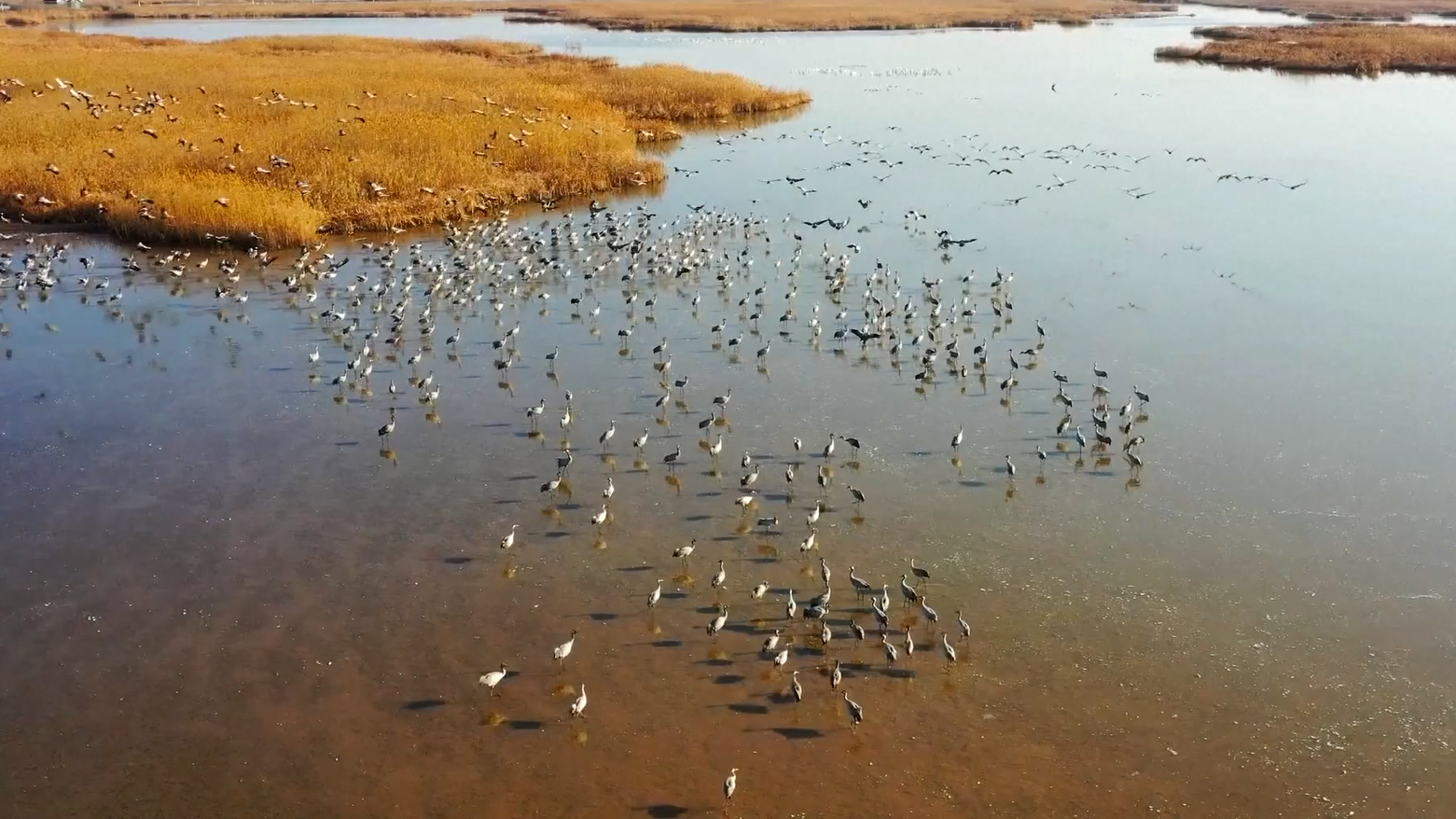01:56

China has achieved significant progress in biodiversity conservation thanks to its unremitting efforts over the past decade in the pursuit of harmony between man and nature, experts say.
Since 2012, the country has attached great importance to protecting various endangered wild animals, including the snow leopard, an acutely endangered species insulated by thick fur marked with black spots.
Years of conservation efforts to protect the big cat's population and habitats have paid off.
"Previously, we thought that male snow leopards only roamed in a maximum radius of 100 square kilometers, but this time it reached 1,700 square kilometers, proving that the habitats of wild animals in the eastern part of the Qilian Mountains have been well preserved," said Gao Yayue, a staff member from the Qilian Mountains Nature Reserve's management department.
China has the largest habitat area for the big cats and the biggest population of snow leopards. The country has seen the carnivore's number grow to about 5,000 from 4,100 at the beginning of the 21st century.
The last decade has also witnessed the remarkable improvement in the protection of natural lands, with national-level parks at the center of the country's efforts. So far, 90 percent of land ecosystems and 71 percent of wild animals and plant species under state protection have been effectively conserved. The population of wild giant pandas has increased to 1,864 from the previous 1,114, while the number of crested ibises has soared from seven to over 5,000. Moreover, 120 endangered plant species have received timely and adequate protection. Today, China records 200 new plant species on average every year, accounting for one-tenth of the world's total.
To ensure biodiversity conservation, great efforts have also been made to restore various ecosystems. From 2016 to 2020, the central government allocated 50 billion yuan (about $7.8 billion) for ecosystem restoration work, effectively ensuring the protection of habitats for a variety of species.

This autumn, more than 300,000 migratory birds have arrived at Yellow Sea Wetland in Yancheng City, east China's Jiangsu Province, which was added to the UNESCO's World Heritage List. The increasing number of migratory bird species at the transitory site shows China's achievements in restoring and conserving wetlands.
Concurrently, public participation in nature reserves, national parks and other protected areas across the country has ensured progress in biodiversity conservation. Over the years, a total of 17,220 herdsmen have served as rangers at Sanjiangyuan National Park in Qinghai, while scores of volunteers in southwest China's Yunnan Province have worked to promote the awareness of environmental protection and man-nature harmony by distributing pollution-free seeds to local villagers and guiding them to provide food and water to wild animals.
"Our country has elevated biodiversity conservation to a national strategy, accelerating the process of mainstreaming biodiversity conservation. By gradually establishing a biodiversity conservation mechanism led by the government and facilitated by enterprises with public participation, we are seeing an era of a beautiful new China where man and nature coexist harmoniously," said Tian Chunxiu, deputy director of the Research Center for Xi Jinping Thought on Ecological Civilization.
(If you want to contribute and have specific expertise, please contact us at nature@cgtn.com.)

